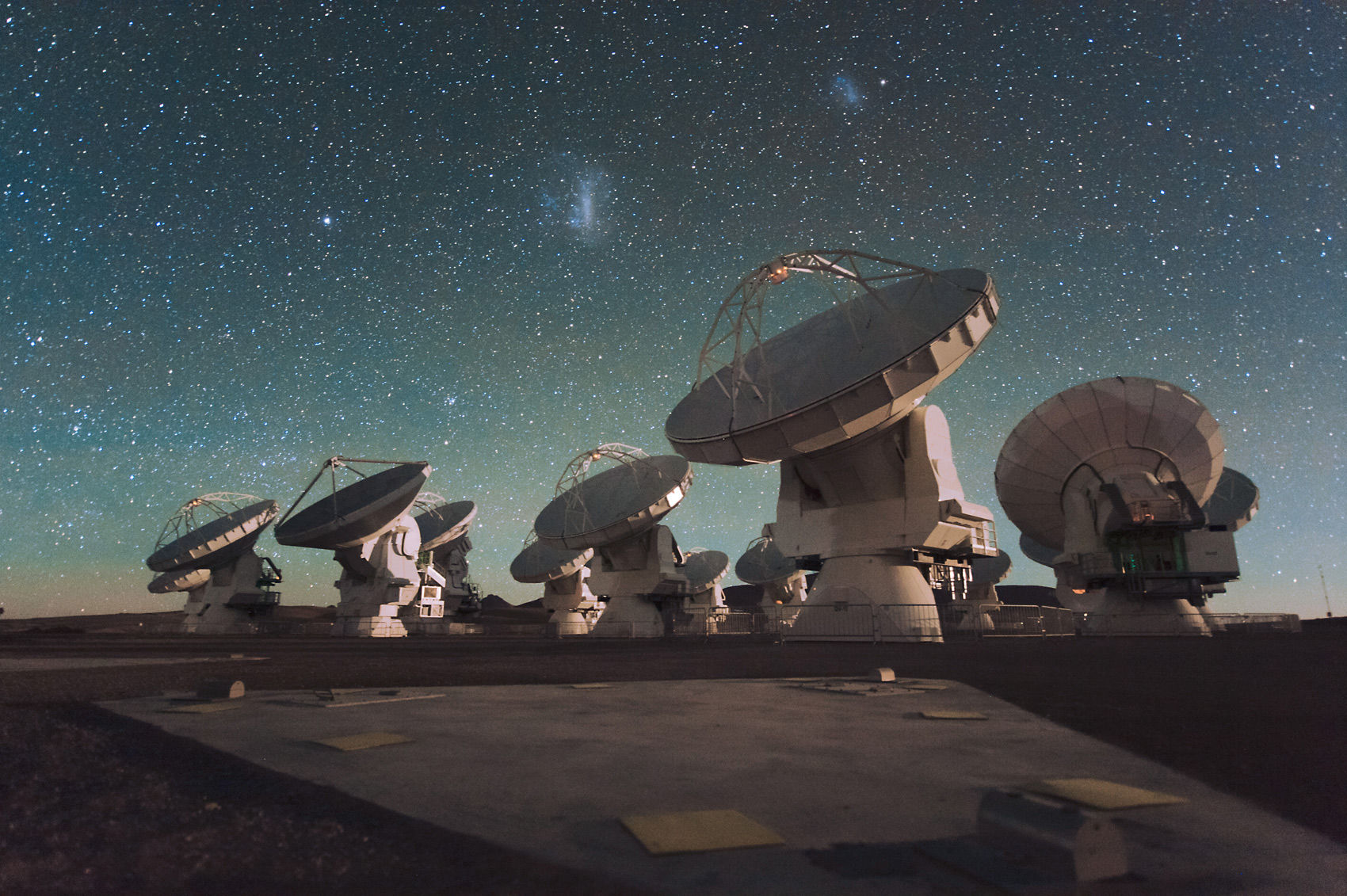Create a free profile to get unlimited access to exclusive videos, sweepstakes, and more!
Countdown: Top Ten ALMA observations of 2019

The Atacama Large Millimeter/submillimeter Array (ALMA) is a huge collection of telescopes in the northern desert of Chile. Unlike visible light telescopes, which are sensitive to the kind of light we see, ALMA looks at much longer wavelength light, far out past the infrared and nearly into radio waves.
The 66 dishes have incredible sensitivity and resolution, so they can see fine and faint details in all kinds of astronomical objects. At those wavelengths ALMA detects cold gas and dust, which are critical to understanding things like how black holes eat matter, how stars are born, atmospheric patterns in planets, and far more.
The dishes are at an elevation of over 5,000 meters, getting them above a lot of our interfering atmosphere, allowing them to make incredible observations. The information they collect is so amazing that the folks at the National Radio Astronomy Observatory (one of the partners running ALMA) wanted to create a top 10 list of observations made by the array in 2019. To my great delight, they asked me to come up with the list, write a short narrative about each one, and then record a voiceover so that they could create video for them all!
That countdown has already begun. The videos are going up over the next few days, and I'm excited to see them live.
[UPDATE (28 Dec. 2019): The NRAO blog is collecting the videos in one place as they go up, so click there to see them all!]
So let's get started! Here's number 10: Jupiter Storms.
If you want more information about Jupiter from ALMA, I wrote about this observation in August. In fact, knowing that I cover a lot of astronomy news, you probably won't be surprised to find out I wrote about many of the stories in the countdown.
Like, for another example, the number 9 story: The Rings of Uranus Glow in Cold Light:
One of the challenges of writing the countdown (beside, of course, picking the 10 stories) was keeping them short. As you might guess, there's a lot to say about all these! But it's a little different writing an article on the science of the rings of Uranus from ALMA observations than it is to create a one-minute narration. I can be a tad loquacious, so keeping something short is not my usual practice. That made this a fun challenge.
The rest of the countdown will be posted soon, so if you want to keep watching them your best bet is to check Twitter (use these: ALMA and NRAO) and/or on Instagram (ALMA and NRAO), where they'll announce the videos as they go live. I’ll be tweeting about them too, of course.
It was an honor to work with the folks at NRAO on this, and I'm very pleased they asked me to do this. When I was in graduate school at the University of Virginia, NRAO HQ was right up the street from us, and I was over there pretty often to attend speaker colloquia and talk to the scientists there about one topic or another. To be able to actually work with them now and create this countdown was a true honor. It was also personally and deeply satisfying, connecting my present with my past when I was just getting started with my astronomy career. So thank you, NRAO and ALMA, for letting me be a part of this, but also for your dedication to observing the Universe … and making sure folks down here on Earth can get a glimpse of it, too.


























